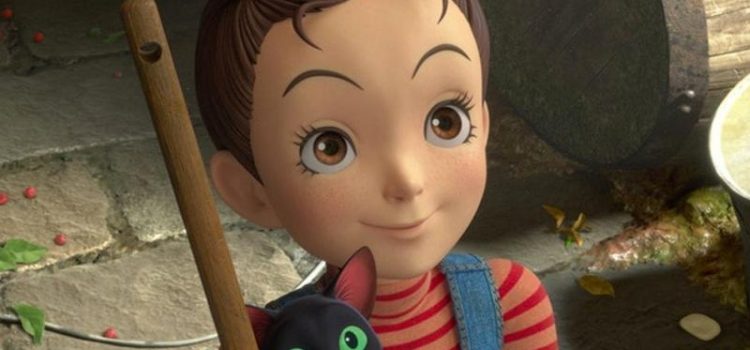By Alex McPherson
Studio Ghibli’s latest project, “Earwig and the Witch,” is a bland film lacking depth and imagination.
The story, based on Diana Wynne Jones’ book, follows Earwig (Taylor Paige Henderson), a young girl living in an orphanage in the British countryside. As a baby, she was abandoned by her mother (Kacey Musgraves), a witch fleeing powerful forces seeking her demise. Earwig, quite a bubbly individual, is content living there with her pal, Custard (Logan Hannon), and has zero interest in moving away.
Her fortunes change when she’s adopted by an imposing, scraggly haired witch named Bella Yaga (Vanessa Marshall) and her spindly, short-tempered husband named Mandrake (Richard E. Grant). Earwig becomes Yaga’s servant — mopping floors and preparing ingredients for her potions. She soon befriends a talking cat named Thomas (Dan Stevens). “Coraline,” much? As the days pass by, Earwig is trapped within this toxic household, unless she can find a way out.
Before all else, dear readers, we must address the film’s controversial animation style. Eschewing the hand-drawn techniques typical of other Studio Ghibli films, “Earwig and the Witch” relies entirely on computer-generated imagery. As a result, environments are rendered with striking attention to detail, but characters’ facial expressions lack nuance, leaving them lifeless and difficult to latch onto. Similarly, characters bluntly explain what they’re feeling at any given moment, perhaps attempting to compensate for their doll-like appearances.
Director Goro Miyasaki (the son of legendary director Hayao Miyasaki) should be commended for breaking from tradition, I suppose. Regardless of the animation, “Earwig and the Witch” still ends up being a rather stale affair.
Unfortunately, Earwig remains irritating from start to finish. She’s fearless and perpetually optimistic. Miyazaki effectively juxtaposes her initial freedom with the repressiveness of her new environment, but she fails to grow in any meaningful way over the course of the film. Ironically, the life lessons we’re force-fed later on don’t apply to Earwig herself.
As she investigates her surroundings, the pacing slows to a crawl. Indeed, “Earwig and the Witch” extends the dullest aspects of her predicament to fill the entire runtime, becoming repetitive and mind numbing leading up to its exposition-packed conclusion. Nothing much of importance happens, as Earwig and her feline companion (primarily relegated to comedy relief) wander around aimlessly without a clear objective. Shouldn’t they want to escape? There’s no driving force to this plot, and little preventing me from watching something else.
Everything changes in the last 15 minutes, however. We’re bombarded with backstory that’s far more compelling than anything Earwig’s involved in, a sad reminder of the film that could have been. Additionally, the visuals stay frustratingly limited until the finale — providing fleeting moments of spectacle that the film should have embraced more consistently. Familiar themes are broached, including music’s communal power, but little stands out, and the end credits sequence leaves more emotional impact than anything in the main plot.
At least the voice cast does an acceptable job with what they’re given. Grant stands out in particular, conveying Mandrake’s grumbling, volatile demeanor in an intimidating fashion.
Small children might enjoy the film’s simplistic narrative and cutesy, occasionally spooky vibes, but everyone else should steer clear and (re)watch “Coraline” instead. It pains me to write this, as a Studio Ghibli fan, but “Earwig and the Witch” just feels pointless.
“Earwig and the Witch” is an animated fantasy adventure film directed by Goro Miyasaki. It is rated PG for some scary images and rude material and run time is 1 hour, 22 minutes. Alex’s Rating: C-

Lynn (Zipfel) Venhaus has had a continuous byline in St. Louis metro region publications since 1978. She writes features and news for Belleville News-Democrat and contributes to St. Louis magazine and other publications.
She is a Rotten Tomatoes-approved film critic, currently reviews films for Webster-Kirkwood Times and KTRS Radio, covers entertainment for PopLifeSTL.com and co-hosts podcast PopLifeSTL.com…Presents.
She is a member of Critics Choice Association, where she serves on the women’s and marketing committees; Alliance of Women Film Journalists; and on the board of the St. Louis Film Critics Association. She is a founding and board member of the St. Louis Theater Circle.
She is retired from teaching journalism/media as an adjunct college instructor.

